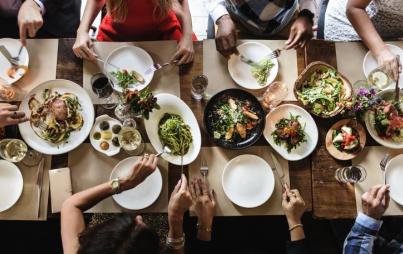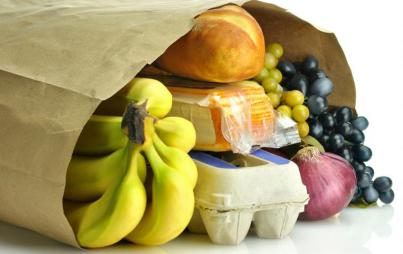
Today in, Amazon Is Taking Over The World: Aforementioned Amazon has bought Whole Foods.
Yes, as if Amazon didn't already own everything Google or Walmart doesn't own, they now own Whole Foods. Yes, for a mere $14 mil, you too could own the most expensive grocery store ever (I made that up. No idea where they rate, but given the $7 a gallon milk, probably up there.)
But wait!
This might benefit you even as much as Same-Day Delivery (I mean probably not, but you never know).
As a result of this acquisition, Amazon has begun slashing prices at Whole Foods groceries all across the country. Which means that your free-range-non-gmo-antibiotic-free-gluten-free-steroid-free-nut-free-joy-free-grass-fed-vegan-$15-a-pound-beef...is now $12.
AND it’s got a new logo to go with it.
That is a real thing.
That’s right, Amazon, in its infinite power, has lowered prices at WF by as much as 43%!
Does that mean I have to stop calling it “Whole Paycheck?”
As it turns out, no!
Because, hear me out, Whole Foods is still the place you can go for a $5 kombucha that you could make at home for $.03. I know you might have been worried that it was actually an affordable place to shop.
Don’t you worry! You still can’t get out of that place under $85.
You Might Also Like: The Struggle With Fast Fashion (And Other Problems Of Privilege)
Amazon’s press release includes 15 sample grocery items:
OK a lot of that is actually a pretty good deal and on point with most grocery stores. (However, were you a bargain shopper prior to the Amazon/Whole Foods takeover, your bargain shopping will still save you money.)
If Whole Foodazon is able to consistently offer organic produce at these prices, it could be a game changer.
For people who can afford $3.49 lettuce.
The average American family of four (on the USDA’s "low-cost" meal plan) should spend about $786. The “liberal” food plan allows for $1195. I think I spend about $2000 for our family of 5 (sometimes, 6, 7, 8 or more), so I should probably look at the “food plan.”
Regardless, if you’re eating on the “low-cost” plan, you’ve got $196.50 to spend per week. My family eats about ten pounds of bananas a week, which, at new Whole Foods prices, would equal $4.90. So I guess we’re ok if we’re just eating bananas.
But we also eat about five pounds of apples, so $9.96 there. We use three pounds of ground beef (1.5 for spaghetti night, 1.5 for hamburgers every other weekend), so that’s $21. We eat a huge filet of salmon (about $25 worth). We don’t eat Tilapia at all because I read somewhere that it’s gross. Thankfully we have chickens, so we don’t buy eggs. But we drink two gallons of milk, which is probably about $4 a gallon. And so on.
Anyway, my point is, just adding that, I’ve spent $70 and we haven’t had breakfast, or lunch, or anything but hamburger and bananas for dinner.
So the “low-cost” meal plan is NOT happening at Whole Foods (and probably not anywhere outside an outlet store and buying beans and rice at Costco).
I question what these lower prices mean for the consumer overall. Will Whole Foods employees still make whatever wage they currently make (which is hopefully more than minimum)? Will we see prices rise in other areas? Will Amazon just keep buying everything until they own our souls?
I don’t know.
In the meantime, if you’re in the market for organic baby kale, Whole Foods has you covered — as long as you’re living the “liberal” food plan.







